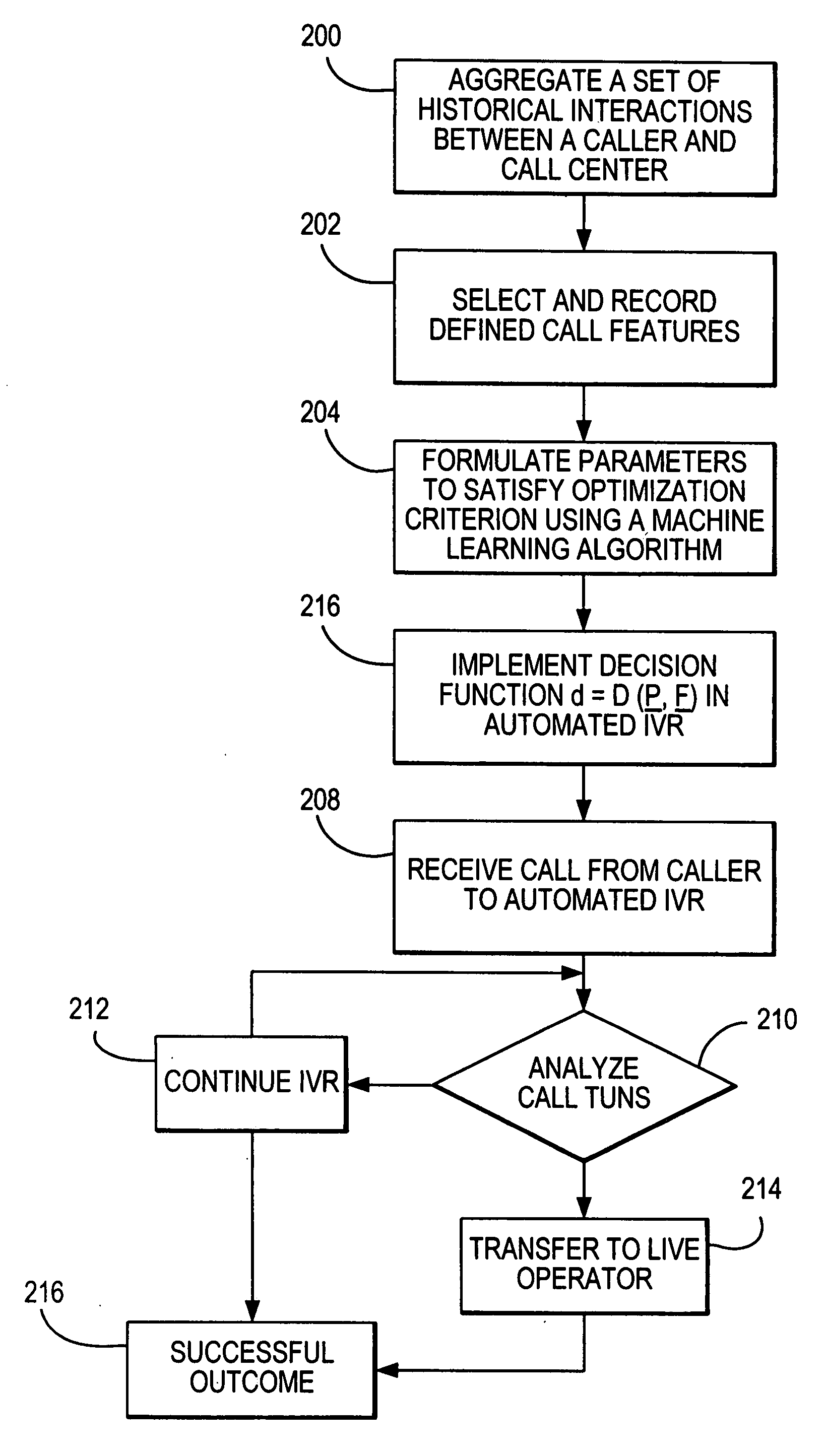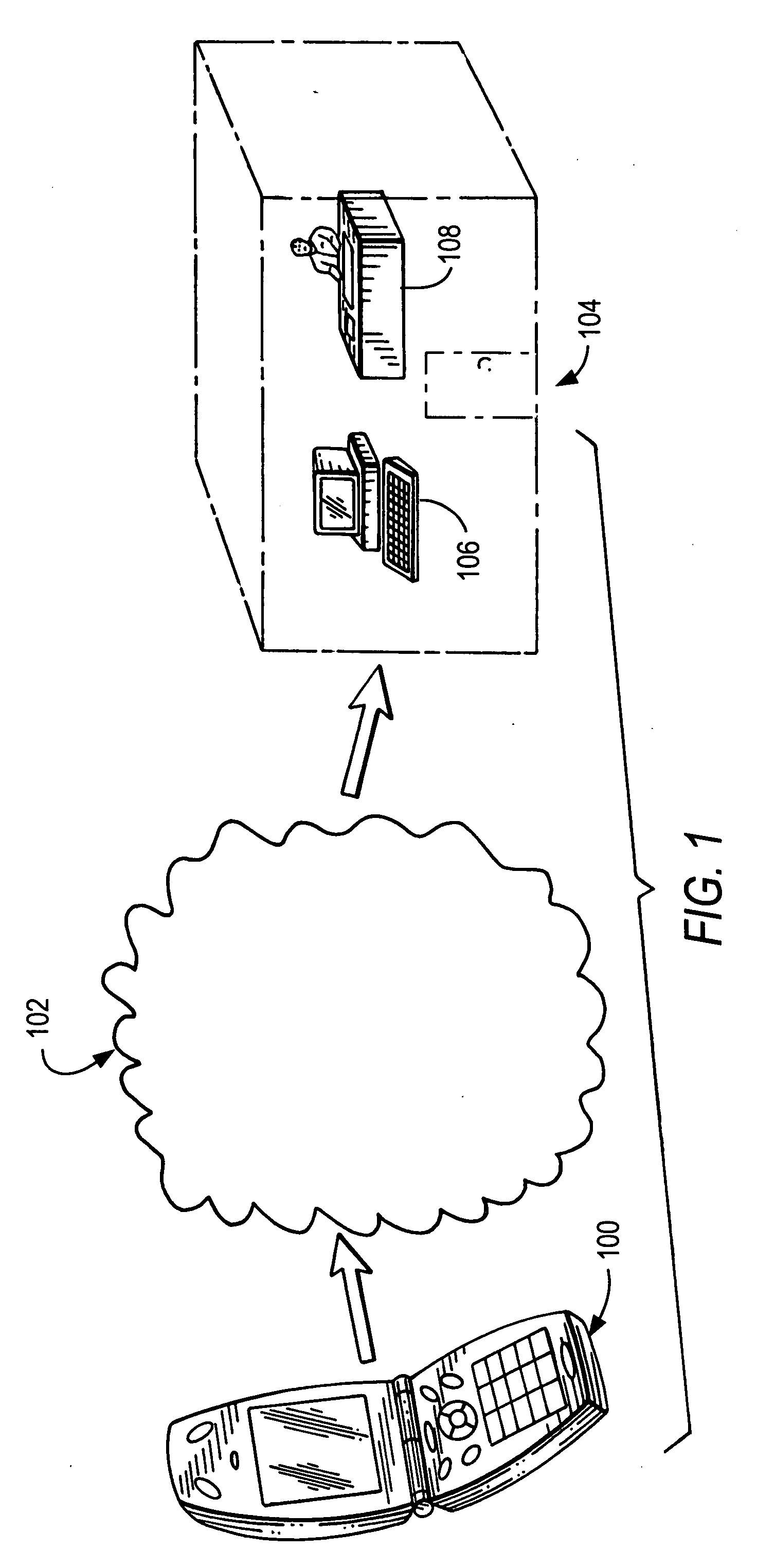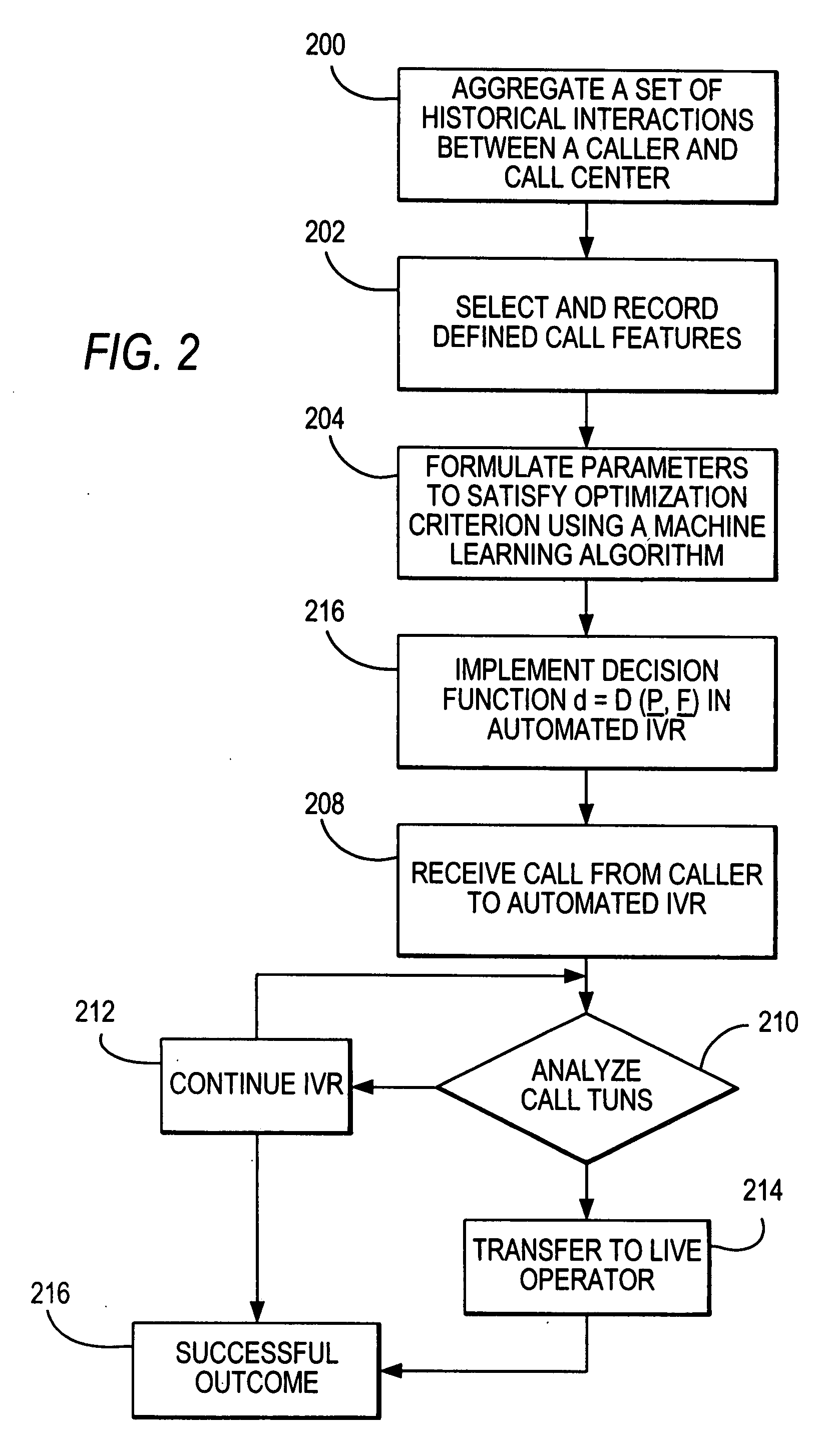Method for making optimal decisions in automated customer care
a technology for automated customer care and optimal decision-making, applied in the field of optimal decision-making in automated customer care, can solve the problems of increasing customer care costs, cost saving, and proportional cost of calls
- Summary
- Abstract
- Description
- Claims
- Application Information
AI Technical Summary
Benefits of technology
Problems solved by technology
Method used
Image
Examples
Embodiment Construction
[0019]The invention described here can be realized by an analytical function:
d=D(P,F)
where d=(1, 2, . . . , M) is the index or scale of values, of one of a finite set of M actions (a1, a2, . . . , aM) to be taken at a given point during the interaction. F is a vector of features that are estimated and given an actual value during the interaction. These features may include but are not limited to, for example, the time elapsed from the beginning of the call t, the ordinal number of the current caller turn (the number of separate questions and answers solicited from the caller) NT, the number of speech recognition no-matches experienced by the caller since the beginning of the interaction NNM, the number of time-outs experienced by the system since the beginning of the interaction NTO, the time of day TD, the day of the week dw, and other parameters that are believed to influence the optimal decision. Thus, the vector F, without any loss in generality, may assume the following general...
PUM
 Login to View More
Login to View More Abstract
Description
Claims
Application Information
 Login to View More
Login to View More - R&D
- Intellectual Property
- Life Sciences
- Materials
- Tech Scout
- Unparalleled Data Quality
- Higher Quality Content
- 60% Fewer Hallucinations
Browse by: Latest US Patents, China's latest patents, Technical Efficacy Thesaurus, Application Domain, Technology Topic, Popular Technical Reports.
© 2025 PatSnap. All rights reserved.Legal|Privacy policy|Modern Slavery Act Transparency Statement|Sitemap|About US| Contact US: help@patsnap.com



